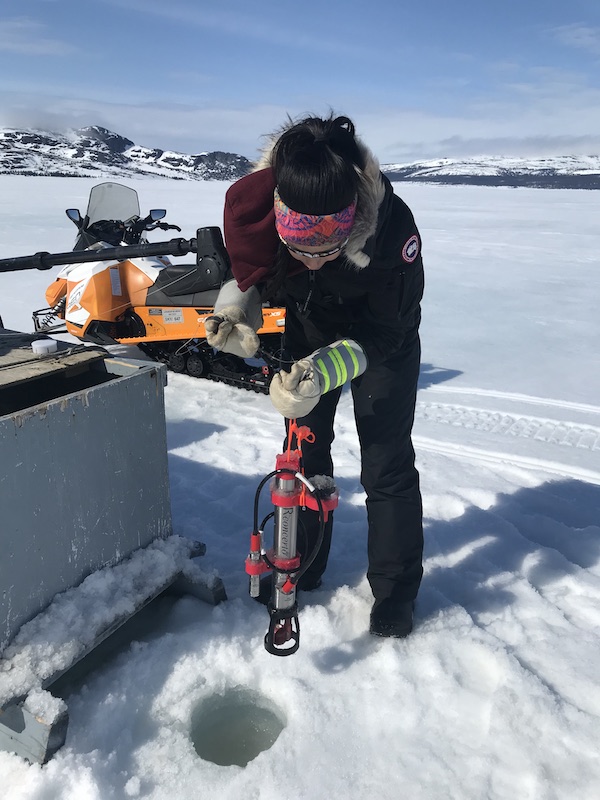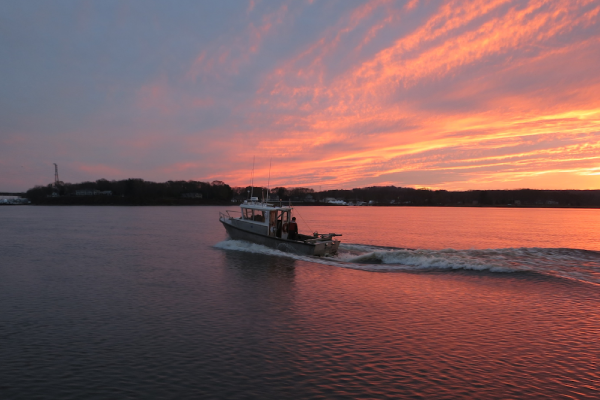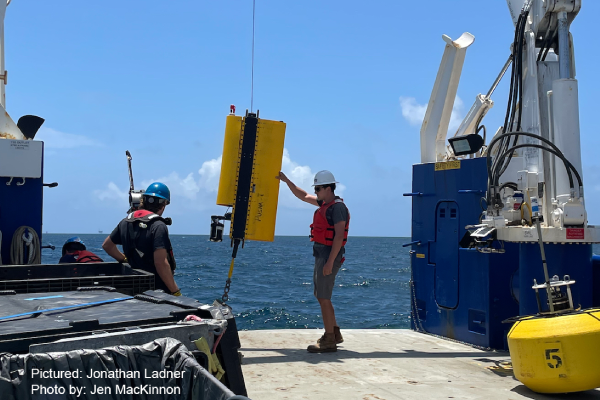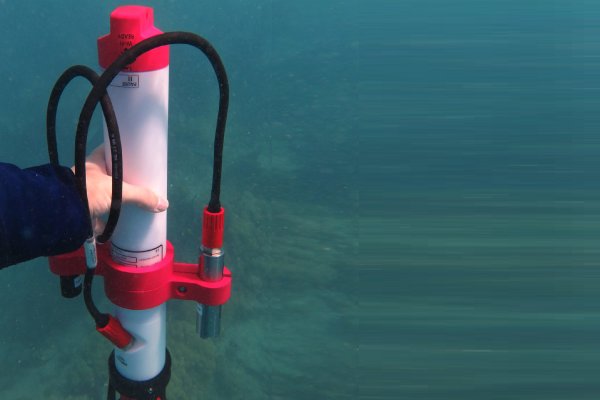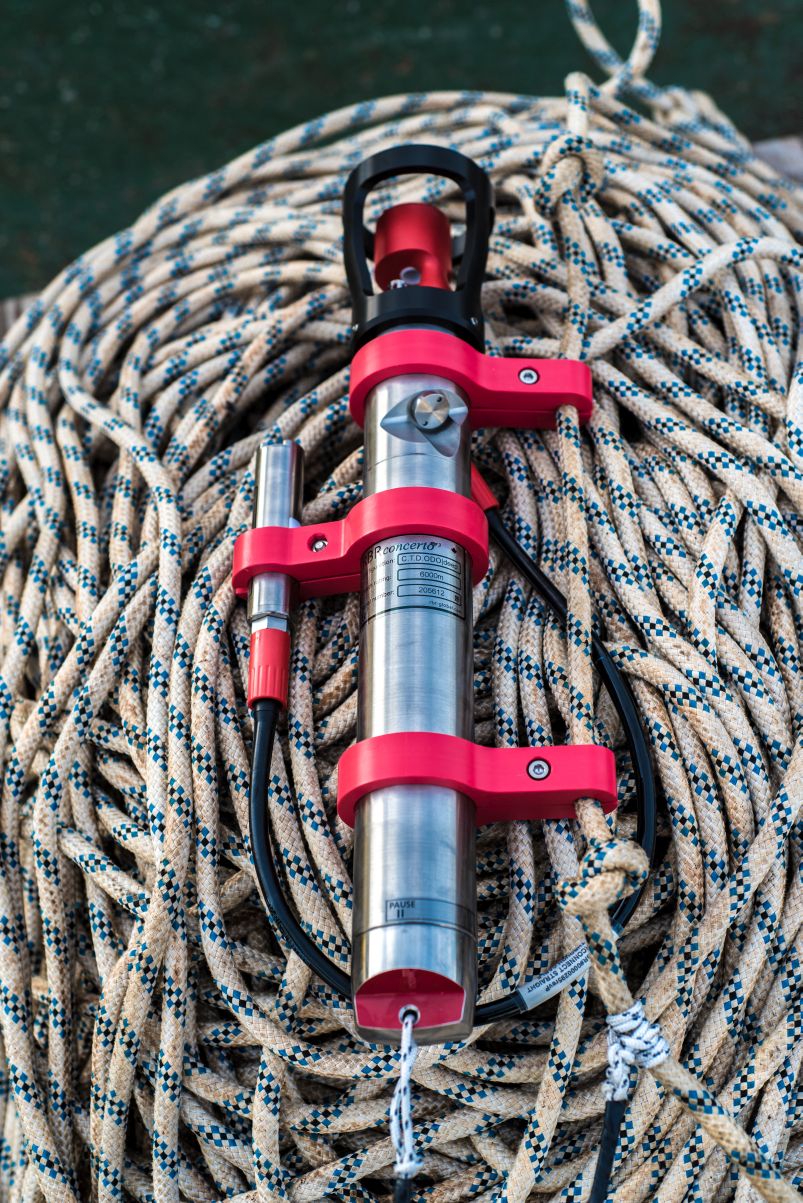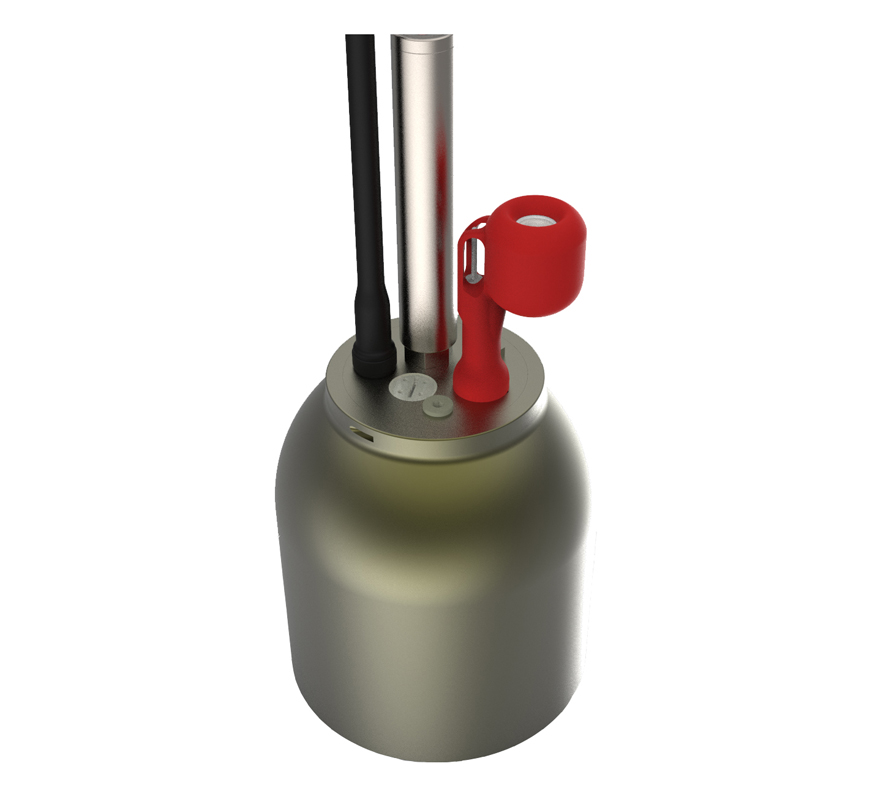The Arctic, a region greatly affected by climate change, is experiencing some of the highest rates of warming compared to the rest of the globe. Although much research has focused on understanding the resulting changes in these high-latitude ocean regions, there is a noticeable gap in coastal zone monitoring. This coastal area is often the most utilized and important to … Read More about Bridging local knowledge and scientific monitoring in coastal Nunatsiavut communities
Pushing what’s possible: High resolution estuarine sampling using rapid vertical profiling
Dr. Rocky Geyer, Senior Scientist at Woods Hole Oceanographic Institution, specializes in estuarine and coastal transport processes, sediment transport, and numerical modeling of estuaries and river plumes. But in actuality, everything Geyer studies boils down to a deep love of nature and physics. “At its core, science is about answering questions and understanding. For me, understanding how water mixes or … Read More about Pushing what’s possible: High resolution estuarine sampling using rapid vertical profiling
The SUNRISE Project: Using RBR instruments to unravel mixing in the Gulf of Mexico
The coastal ocean is a dynamic and productive environment, critical for the success of fisheries, tourism, and local economies. But these productive environments are also associated with a variety of complex oceanographic features. To better understand and protect these ecosystems, many physical oceanographers are diving deeper into the dynamics that drive mixing and water exchange. Complex coastal features like currents … Read More about The SUNRISE Project: Using RBR instruments to unravel mixing in the Gulf of Mexico
Sampling by Snorkelling: Using the RBRconcerto³ C.T.D.ODO.Tu to sample mangroves and coral reefs in the Florida Keys
Snorkelling through coral reefs and kayaking through mangroves is undoubtedly not how most ocean scientists would think to deploy a CTD. But thanks to RBR’s easy-to-use, lightweight CTD, SEA Semester students researching coral reefs and mangroves along the Florida Keys were able to do just that. Based in Woods Hole, Massachusetts, Sea Education Association (SEA) is a leading non-profit, independent … Read More about Sampling by Snorkelling: Using the RBRconcerto³ C.T.D.ODO.Tu to sample mangroves and coral reefs in the Florida Keys
RBR loggers deployed in the Cretan Sea (Eastern Mediterranean Sea) to monitor climatic change impact on the marine environment
In February 2021, two deep-sea moorings were deployed in the west Cretan Sea strait (south Aegean Sea) between Crete and Antikythira. The moorings were equipped with two RBRconcerto3 deep-sea loggers, including pressure, temperature, conductivity, and RBRcoda T.ODO dissolved oxygen sensors. The RBR loggers were deployed both at the strait bottom (~900 m) and at intermediate depth (300 m), paired with … Read More about RBR loggers deployed in the Cretan Sea (Eastern Mediterranean Sea) to monitor climatic change impact on the marine environment
Observing ocean health: RBR, Dalhousie and DFO collaborate to develop new biogeochemical sensors
The ocean’s contribution to climate change may not be as visible as that of the atmosphere, but in lock-step with the atmosphere, the ocean is changing. The physical dynamics of its currents and temperature are changing, as well as its chemical and biological aspects; its biogeochemistry. Knowing the ocean’s biogeochemistry, including ecosystem health and the ocean’s ability to absorb carbon, … Read More about Observing ocean health: RBR, Dalhousie and DFO collaborate to develop new biogeochemical sensors
